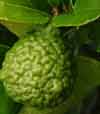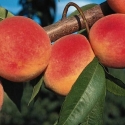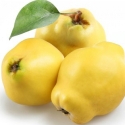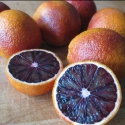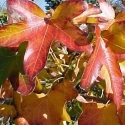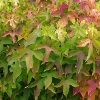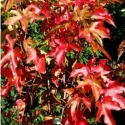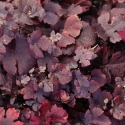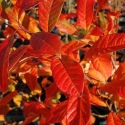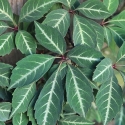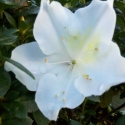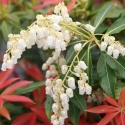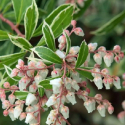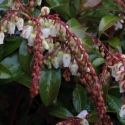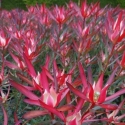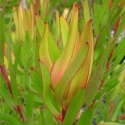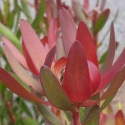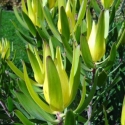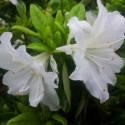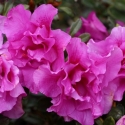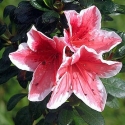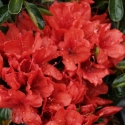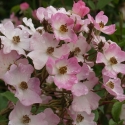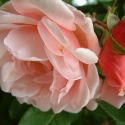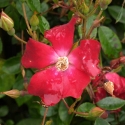Saturday 9th April, 2022
Hi
New infections and infestations are a natural phenomena of the living world!
I have had some feed back concerning
Feijoas and the fact that I said that they are so hardy and that little affects them. In the most part, this is quite true, when you compare them to many other fruit tree varieties that we will all have in our home orchard, like say apples, peaches and nectarines (and I could list many more) yet we still persevere and grow these. We like home grown because its tastes so good picked direct from the tree. Citrus is another that I put in the same category as Feijoas, these again are affected by very little and I'm not one to overly push what they could be damaged by. In the most part we all manage to get some fruit. Gosh, if I wrote about every fungal or insect problem that apples and peaches got for example we just wouldn't bother, but usually we all get enough fruit to keep us happy.
It should be no surprise that all that lives can be susceptible to infection or infestation of some sort. Take the last couple of years and the latest pandemic that demonstrates my point and the plant world is absolutely no different. Buxus blight arrived some 25 years ago and we will all have heard of myrtle rust that seemed to just blow in a few years back and I'll just throw in here that Guava moth has also been here a while too arriving presumably from Aussie in 1997.
So Guava moth is well established in Northland and Auckland and is making its way south so is also now found in the Waikato but will eventually affect all of the North Island and part of the top of the South Island. This little blighter is a little like codling moth in the fact that eggs hatch on the fruit and the grub burrows into the fruit that we want pristine. The big difference is that guava moth is way less fussy and will just about make itself at home on all manner of fruits including apples, pears, peaches, quinces, nuts, loquats, citrus and many more varieties. There is more to know as this moth, its grubs can continue its cycle throughout the whole year. A great method of survival and continuation of its species.
I don't believe that there is a planned approach for the home orchardist in NZ just yet but there are some things that you can do and probably should be already doing anyway for all the other infections and infestations that affect various fruits.
Keep citrus sprayed with conqueror/neem oil and copper oxychloride as you should be doing already for the control of citrus virus and scale as the oil will suffocate the eggs. Make sure that you winter spray all your pip and stone fruit with lime sulphur as this kills eggs and fungal spores. Remove rogue plants that could be hosting infestations like feral loquat trees or any other fruiting tree that is wild or of no use. In the home garden situation, a fine mesh can physically keep the moth out from laying eggs. Guava moths pupate in fallen fruit and debris so the moral here is to keep the area under your trees clean and tidy.
I don't know of any specific Pheromone traps for the the guava moth so somebody out there may know and let us know (or if they have other tips that we can share). If there are not then I'm sure in the future just like codling moths, there will be. There has been some research into parasitism of the moth but again this will be for the future. Interestingly enough this Aussie moth is not a problem in its native country so NZ must be the place of milk and honey so to speak.
Finally, this pest is a grub/caterpillar and so will respond to the use of Caterpillar sprays like Success and could be another tool in the kit in combination with all of the above. Although regular sprays may be needed with a little bit of effort these all may all cumulatively add up to a lesser fruit infestation... and remember it's not just about Feijoas.
Autumn Colour.
Spring is all about the flowers but Autumn for me is about the colours of the trees and their leaves as the cool weather descends. The leaves of the
Liquidambers are on the turn now. You can often get seedlings which are fine but there is a raft of selected grafted clones that are grown for their specific leave colour in the Autumn. Note too that Liquidambers often have a corky like growth on their stems and this is perfectly normal though will vary between seedlings and selected clones. Most liquidambers will make for a handsome shade tree in the garden or where you have a bit of space but there is quite a cool small growing one called
Gumball. These are often standardised to give them a bit of height.
We don't usually have these again until the winter when the new seasons trees arrive but have got this selection in early and its ideal planting time. Take some time to follow the links and check out each of these..
Alto Palo,
Burgundy,
Festerii,
Lane Roberts and
Rotundifolia. Mostly these have the classic pointed leaves but the clone
Rotundifola has round leaves like it's name says.
Nyssa Sylvatica or Tupelo
is a goodie for colouring here in the Waikato and it doesn't even need the cold temperatures to put on a vibrant display. Quite a handsome shade tree with an attractive green leaf all summer. Small indistinct stamen like flowers that really get those bees going and there is more. These are a great specimen for a wet area however will grow equally as well in other garden situations.
Taxodium distichum or swamp cypress is another wetland tree that again will grow in most positions. Conifer like foliage and pyramidal in form, looking great in cluster plantings. I really love the rusty orange colour of the Autumn foliage and then the lime green freshness of spring.
A couple of climbers that are on the cusp of Autumn change being the
Silver Vein Creeper or if you like the Latin
Parthenocissus henyrana. This one has attractive silver veined leaves that are about to change to glowing red. Also check out the ornamental grapes like
Vinifera purpurea and as you will guess stunning purple tones.
Literally just arrived... the Azalea collection and Lily of the Valley shrubs.
As I write this we have had twelve pallets turn up all full of
Azaleas to complete out collection in the garden centre for the year. They will all be in the garden centre ready to check out over the weekend and hopefully all in alphabetical order or check them out online before you arrive.
There will have to be something here for just about everyone. I believe that the lily of the valley shrubs or
Pieris will be turning up tomorrow which is great as we haven't had many of these in stock for a while now. A great shrub in the garden with a range of sizes from those at around 1m to approx 3m. On many of them the new foliage is red and they have typical lily of the valley like flowers.
Coming soon.... Leucadendrons
Leucadendrons are a fabulous evergreen shrub that produces stunning winter colour. We have a great selection due in the next week available for pre-order on our website or over the phone.
Just a few of the standout varieties coming.
Safari Sunset, The erect branches of this shrub have dense green leaves that are flush with red, the flower bracts are golden yellow deepening to wine red in winter.
Inca Gold, This variety has green-gold foliage topped off with tulip shaped golden flower bracts that become tipped with crimson in winter.
Ambrosia, A striking hybrid with a vigorous habit, long stems great for floral work. Mid-winter it will have very attractive vibrant red and cream bracts.
Easter weekend hours.. only closed Good Friday
We will be closed Good Friday but will be open for the remainder of the Easter weekend with our normal trading hours 8:30am to 5pm.
Following Easter is Anzac weekend and the garden centre will be respectfully closed until 1pm from which time we will be open until 5pm.
There will be a few short weeks for mail order services due to the public holidays and so we will limit dispatch to Monday and Tuesday for the week before Easter so that all parcels get to their destination prior to the weekend. The following two weeks will be Tuesday only for South Island and rural delivery and Wednesday only for local and town addresses.
Mail orders to the South Island and rural deliveries will continue to leave Monday and Tuesday only as freight currently is taking longer to these regions.
Unfortunately, we are still experiencing delays to some areas in Wellington.
I was so grateful to get a small amount of rain the other day, 20mls. When I checked out our rain gauge and because it's been so warm as a consequence the grass is just romping away. Lawns to mow and hedges to trim. The guys in the garden have been removing all the last years leaves off all the winter roses, next they will feed and mulch the garden around them so that they flower and look amazing followed by more new seasons leaves to last another year.
If your roses are coming up to their last flush well all good, but if they are finishing then perhaps its time to leave them alone as there may not be enough time to get a last flowering. They need 7 to 8 weeks to flower and the beginning of June may be too late. I find it's pretty hard not to tidy them but you want them in good condition to prune in late August so maybe leave them.
Don't forget that we have still our sales area in the middle of the garden centre with Roses, Apples, Rhodos, Azaleas and farm trees if you are calling out.
What ever you are doing for the weekend, have a great one.
Cheers Lloyd, Tony and the Wairere team
